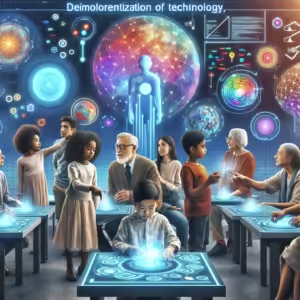In recent years, the rise of deepfakes has raised significant concerns surrounding privacy, security, and misinformation. The ability to create lifelike videos that manipulate reality presents both exciting opportunities and alarming threats. However, groundbreaking research at New York University (NYU) could revolutionize the way we detect such deceptive digital creations. Let’s dive deep into the findings of this exciting study and explore how real-time deepfake detection could change the landscape.
Understanding Deepfakes
Deepfakes refer to synthetic media where an individual’s likeness is replaced with someone else’s – often through advanced artificial intelligence techniques. These technologies allow for the seamless replacement of faces and voices, leading to artificially generated videos that appear remarkably real.
- Deepfake technology has found applications in entertainment and education.
- Unfortunately, it is also exploited for misinformation campaigns, fraud, and blackmail.
Given the potential dangers posed by deepfakes, the need for effective detection mechanisms has never been greater.
Innovation at NYU: Key Findings
The recent work by NYU researchers presents a transformative approach to detecting deepfakes in real-time. Utilizing advanced machine learning algorithms, this innovative solution aims to identify manipulated content rapidly and accurately, making it a significant advancement in the field.
The Technology Behind Detection
This pioneering research leverages the following methodologies to enhance detection:
- Neural Networks: Employing deep learning techniques enables the system to recognize patterns unique to deepfakes.
- Frame Analysis: Instead of analyzing entire videos, the technology inspects individual frames, enhancing efficiency and accuracy.
- Temporal Consistency Checks: The algorithm assesses the logical flow of a video, identifying inconsistencies that might suggest manipulation.
Real-Time Capability
What sets this detection method apart is its real-time analysis capability. Previous solutions often suffered from delays, making them impractical for urgent situations. However, NYU’s breakthrough allows users to detect deepfakes as they are being generated or shared.
- Speed and Efficiency: The system processes videos in milliseconds, providing immediate feedback without noticeable lag.
- User-Friendly Interface: Designed to be accessible to users without technical expertise, making it easier for non-specialists to utilize the technology effectively.
The Implications of Real-Time Detection
The implications of this groundbreaking detection technology are vast. Here’s how it can transform various sectors:
1. Combating Misinformation
With the capacity to quickly identify deepfakes, news organizations and social media platforms can better manage misinformation. This helps ensure that what users are consuming is credible and trustworthy.
- Media outlets will regain trust among their audiences.
- Social media platforms can enforce stricter content guidelines.
2. Enhanced Security Protocols
Deepfake technology can pose risks in law enforcement and cybersecurity. By integrating this detection system, security agencies can safeguard sensitive processes and communications by verifying the authenticity of video evidence.
- Protects against impersonation in legal scenarios.
- Aids in identifying fraudulent activities that exploit deepfakes.
3. Educational Applications
Educators can benefit from real-time deepfake detection by incorporating it into media literacy programs. As young people consume digital content, they need to understand how to identify manipulative media.
- Fosters critical thinking among students.
- Prepares future generations to navigate a world increasingly populated by digital deception.
Future Directions
While the NYU researchers have made a noteworthy breakthrough, they acknowledge that further developments are necessary. Continuous training and refinement of the algorithms are essential to ensure the detection system can adapt to rapidly evolving deepfake technologies.
- Data Diversity: Incorporating a broader range of video sources to enhance the algorithm’s reliability.
- Collaboration with Tech Companies: Partnering with social media platforms to create a comprehensive solution.
Moreover, raising public awareness of deepfake technology will be crucial in deploying these systems effectively. Users must be educated about the existence of deepfakes and the importance of using detection tools to verify content authenticity.
Conclusion
As we continue to navigate the complexities of the digital age, the NYU researchers’ work in real-time deepfake detection represents a powerful tool in our arsenal against misinformation and deception. By leveraging cutting-edge technology, society gains a mechanism that promotes truth and accountability.
While challenges will persist, the strides made in detecting deepfakes offer hope for a future where digital media remains a reliable source of information. In an era of rapid technological advances, staying informed and equipped with the appropriate tools is more important than ever.








